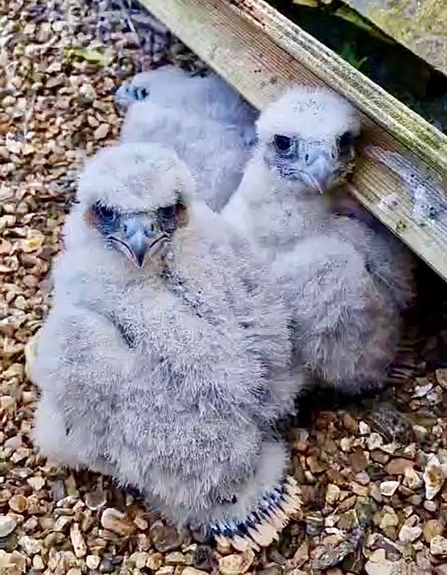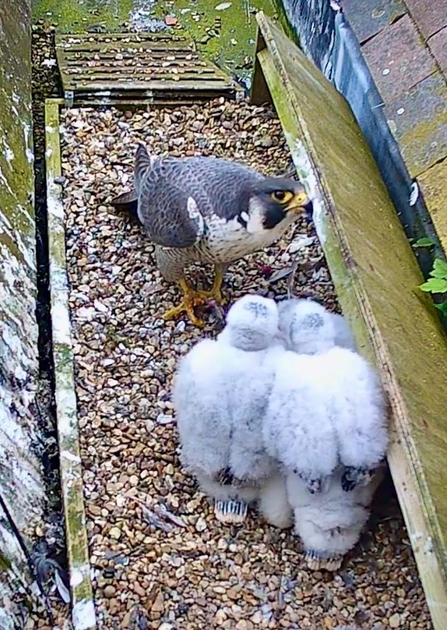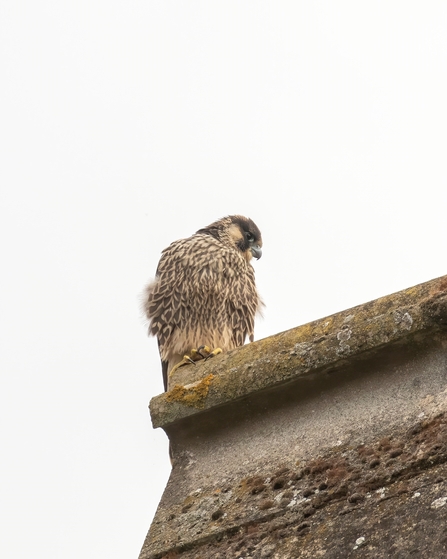When a Peregrine chick was bred for the first time on St Albans Cathedral in May 2022, as a licensed bird-ringer/nest recorder and holder of a government license to visit the nests of this specially protected species, I ringed the young female bird which was seen to successfully fledge the nest in late June of 2022. We were then delighted to see the Peregrines return to breed again in 2023 and they raised three young, all males, which I ringed on 1 June in that year.
On Bank Holiday Monday, 27 May 2024, now with another three chicks in the nest tray, I went with colleagues to the nest and carried out the ringing of them, just three weeks after they had hatched. We know from the webcam live-stream that the parents have looked after them well, so when we checked them over we saw that they were all in good condition. We fitted a ring on each of their legs. One is a British Trust for Ornithology metal ring, a bit like a license tag, the other is a larger ring which is coloured orange with black lettering which means we’ll be able to track them in years to come.
Quite reasonably many people ask why do we need to ring birds? Well, if we don’t put rings on these birds we don’t know much about their origins or their future. We see birds sitting around, they turn up at nests or whatever and we have no idea where they came from, how old they are, who they are. However, those with the colour-rings which can be read from a distance let us know exactly who each bird is. That means we have a much better idea of how long they live, their movements around the UK and even abroad, along with their relationships as sometimes they might not get on and split up or have mishaps, so the ringing gives us a way of tracking the family trees of Peregrines going forward.
In addition to fitting the rings we also took measurements which from these, particularly their weights, we can ascertain the sex of each bird as female Peregrines are much larger than males. On Monday we concluded that we have two females, known technically as ‘Falcons’ and a male, known as a ‘Tiercel’.




